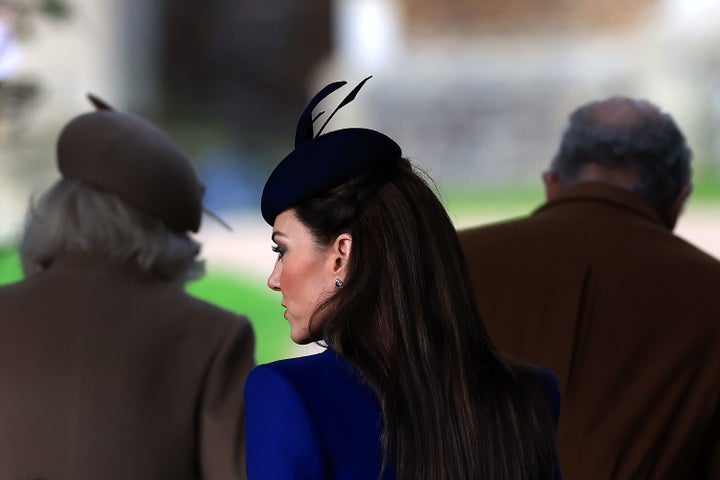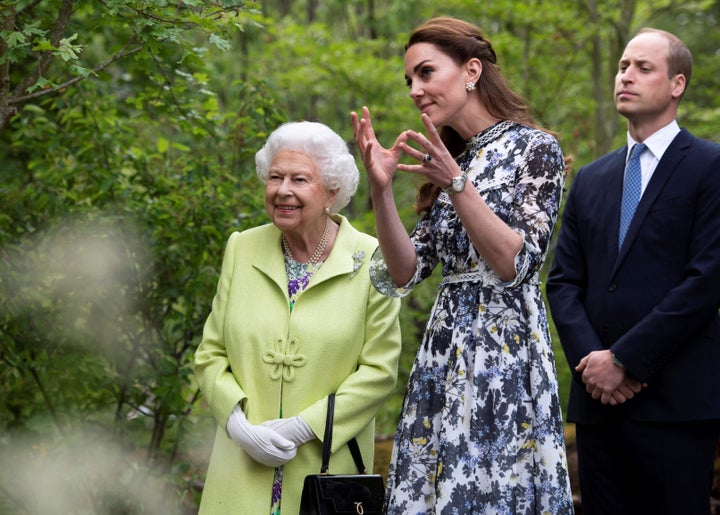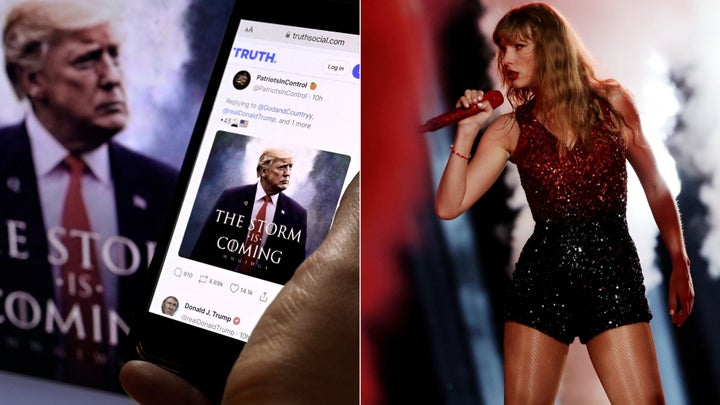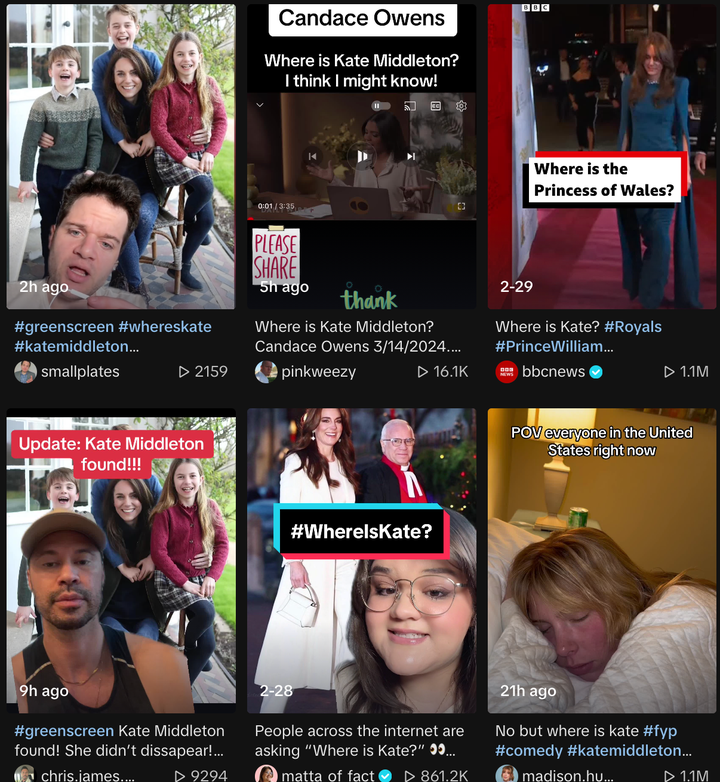The internet’s fascination with ‘missing’ white women strikes again. (Though that’s not the only reason #Kategate has gone viral.)
What’s going on with Kate Middleton?
This week, even non-royal-watchers were begrudgingly curious about the “disappearance” of the future queen consort.
Kate, the Princess of Wales, has been the subject of internet speculation after followers of the royal family noticed that, outside two grainy paparazzi photos, Middleton hadn’t been spotted in public since Christmas Day 2023, when she attended a church service at Sandringham.
Kensington Palace announced in January that she underwent a planned abdominal surgery and would be unlikely to return to public duties until after Easter, but internet sleuths weren’t satisfied.
Is she really convalescing from abdominal surgery or had the princess undergone plastic surgery she wanted to keep on the down low? Is she actually in a medically-induced coma and are all those grainy photos doctored? That March 4 photo of Middleton being driven by her mother, Carole Middleton, near Windsor Castle looked suspicious, some said.
Others speculated that Middleton’s leave was related to rumors that her husband, Prince William, the future King of England, had had an affair with the couple’s friend, the Marchioness of Cholmondeley. (On Tuesday night’s “The Late Show,” Stephen Colbert devoted a monologue to the affair rumors.)
Though “never complain, never explain” has long been the British royal family’s public relations strategy, last month, the palace attempted to shut down the rumors and conspiracy theories.
But the shelf life on #Kategate was extended last weekend after William posted a photo of his wife surrounded by their three children. The photo appeared to be highly edited, and multiple news agencies, including The Associated Press, withdrew it from publication.

A day later, Middleton wrote on X (formerly Twitter) that the photo had been manipulated: “Like many amateur photographers, I do occasionally experiment with editing. I wanted to express my apologies for any confusion the family photograph we shared yesterday caused,” she wrote. “I hope everyone celebrating had a very happy Mother’s Day.”
That did little to quell the gossip. Since the conjecture isn’t likely to die down soon, we asked royal experts ― and conspiracy theory experts — to break down why so many are intrigued by Kategate rumors.
With her carefully cultivated public image, Middleton is rarely the subject of such juicy gossip.
Since her and William’s courtship in their early aughts, Middleton has managed to maintain a public image that’s near pristine ― arguably, even a little boring. So any suggestion that something is amiss with the future queen consort or her marriage is intriguing.
“We have grown so accustomed to seeing the Princess of Wales at a constant whirlwind of events, always smiling and perfectly dressed, that her unexplained ― or at least, unconvincingly explained ― absence stage feels jarring,” said Katharine McGee, the author of the best-selling American Royals novels and a devoted royal watcher.
McGee said the recent royal drama reminds her of the late Queen Elizabeth II’s famous quote: “I have to be seen to be believed.” Without seeing Middleton in action, our minds and imaginations are jumping to fill in the blanks, she said.

Middleton is the most glamorous person left in the royal family.
The reason the British public is obsessed with this mystery is because Kate plays a starring role in the monarchy, said Nicoletta Gullace, an associate professor of British history at the University of New Hampshire.
“The royal family is dull, colorless, and seemingly unstable without her glamor, beauty, and cheer,” Gullace told HuffPost. (Royalists hoping to keep the monarchy alive were enchanted with Meghan Markle for similar reasons when she first entered the picture in 2017.)
“In many ways, Kate has taken the place of Queen Elizabeth, visually, with eye-catching clothing, warmth, and her place at the center of a family that is stable and intact ― something highly reassuring to the public during uncertain times,” she said.
What’s interesting to Tom Quinn, the author of “Gilded Youth: A History of Growing Up In the Royal Family,” is that the TikTok crowd seems deeply invested in this royal family drama.
“Normally it’s mostly people over the age of 50 who are interested in what happens in the royal family, but because Kate is young and glamorous ― there’s echoes of Princess Diana ― much younger people are now interested.”

People are eager to search for another “missing white woman.”
In a story on the Middleton brouhaha for the Los Angeles Times, entertainment reporter Meredith Blake compared the public’s interest in this story with the fascination with true-crime stories. On gossip forums, grainy photos and new theories are passed around with the same fervor as details in missing person cases, especially those involving missing wealthy white women. (Blake noted that the Middleton gossip is also in many ways reminiscent of speculation about Shelly Miscavige, the wife of Scientology leader David Miscavige, who has not been seen in public since 2007.)
“We live in a culture obsessed with disappearing white women, and is there a more prominent white woman in the world than the current princess of Wales?” Blake wrote. “I can only imagine a bigger fuss if Taylor Swift’s private jet suddenly vanished over the South Pacific during one of her jaunts across the globe for date night with Travis Kelce.”
Middleton isn’t at the center of a missing person crime investigation ― she’s just not appearing in public ― but people are almost treating this story with a similar level of concern, said Zach Sommers, a criminologist who’s written about “missing white woman syndrome” and how the media ignores and underreports cases about missing women of color.
“[With Kategate,] there certainly seems to be a true-crime feel to the coverage, as well as the online sleuthing that’s going on is similar to what we often see in missing persons cases,” he said. “People love a good mystery ― especially real ones that they can try to solve.”
![“[With Kategate,] there certainly seems to be a true-crime feel to the coverage, as well as the online sleuthing that’s going on is similar to what we often see in missing persons cases,” said criminologist Zach Sommers.](https://img.huffingtonpost.com/asset/65f36c3e230000320055067e.jpeg?ops=scalefit_720_noupscale)
Conspiracy theories are having a moment.
Conspiracy theories have obviously always been around ― hello, moon landing truthers! ― but social media has accelerated their reach like never before, fueling hoaxes like QAnon to the claim that Taylor Swift is a “Pentagon asset.”
These rumors and theories tend spring up when people feel that there’s a lack of transparency or when the mundane truth is unsatisfying, said Karen Douglas, a professor of social psychology who studies conspiracy theories at the University of Kent in the U.K. (What’s more mundane than “abdominal surgery”?)
“People seem to be attracted to conspiracy theories when one or more psychological needs are not being met and we know that people want clarity and certainty and to feel safe and in control,” Douglas told HuffPost.
“When there seems to be a lot of secrecy, conspiracy theories might seem to offer a way to satisfy these needs and make people feel better, although there is very little evidence that it actually works,” she explained.
Douglas thinks this situation is a perfect storm for conspiracy theories: A famous person who seems to have gone missing creates uncertainty and the feeling that something terrible has happened. Given how easy photos are to edit, in the age of misinformation, seeing is no longer believing.

The story drives traffic.
On TikTok and X, gossip influencers and other internet personalities are motivated to post about the Middleton drama to go viral and make a name for themselves, said Rachel Burchfield, co-host of Podcast Royal and senior celebrity and royals editor for Marie Claire.
“Right now, it feels like a contest between voices online to see who can invent the most unique theories around Kate and get noticed the most,” she said.
And to get a little meta here and state the obvious, the media is also wont to cover Kategate developments and the palace’s responses for clicks.
“This reminds me of the Taylor Swift conspiracy theories last month that seemed to disappear as soon as journalists stopped talking about them,” said Joseph Uscinski, a professor of political science at the University of Miami, where he studies and teaches courses on conspiracism.
There may be truth to that ― but the British public and tabloid press aren’t likely to let this one go so easily. Because the royal family’s lavish lifestyle is partially funded by taxes with the tacit agreement that royals will perform public, diplomatic and charitable duties, Brits feels entitled to answers and appearances, said Lindsay Holiday, a public historian and creator of the “History Tea Time” YouTube channel and podcast.
“Modern constitutional monarchies survive solely on their popularity,” she said. “There is an argument to be made that [Middleton] willingly agreed to this Faustian bargain by choosing to marry into the royal family as an adult.”

The Photoshop of it all.
People online begin to raise questions within minutes of the Mother’s Day photo being posted, pointing to obvious Photoshop mistakes. It got really weird, though, when people began suggesting that Middleton’s face had actually be taken from a cover of Vogue she appeared on eight years ago, though that claim has been disputed.
Luke Bailey, head of digital at the i, a national newspaper in the U.K., wrote on X: “Clip going around that uses a fade to ‘prove’ the Kate Middleton photo is actually her Vogue cover … there’s actually a reason you don’t use a fade to do that, because it makes images appear more similar than they are. If you take individual details—they’re a long way apart.”
Speaking with Yahoo Lifestyle, T.J. Thomson, visual media and communication expert at RMIT University in Australia, said he isn’t convinced the Vogue theory is entirely accurate either. People often smile the same way.
“I overlaid the Vogue cover on top of the Instagram image and think there are some similarities, but it’s not, in my estimation, an exact match. Perhaps something like an 80-90 per cent overlap?”
Then came the memes. Thanks to Facetune and Photoshop, we’re all proficient in editing our own pictures. The fact that Middleton did it, got called out for it, then had to apologize is ripe for meme-ing.
https://twitter.com/mattxiv/status/1767345515895664916?ref_src=twsrc%5Etfw%7Ctwcamp%5Etweetembed%7Ctwterm%5E1767345515895664916%7Ctwgr%5Ef6d208eef5c1c58a45847bf9e9751cb4707e14d3%7Ctwcon%5Es1_&ref_url=https%3A%2F%2Fwww.huffpost.com%2Fentry%2Fkate-middleton-missing-explained_n_65f20dade4b01707c6d2e2f6
The public increasingly feel they’re owed transparency about public figures’ health.
Today’s celebrities engage directly with their fans on social media. But one big drawback of that is that fans expect total access to said celebrity, including information on their health, particularly their weight and appearance. When fans body shamed her last year, pop star Selena Gomez felt compelled to share that her lupus medication had caused her weight to fluctuate.
“I think Kate ― and other public figures ― should be afforded the privacy she both deserves and desires,” said Marlene Wagman-Geller, the author of “The Secret Lives of Royal Women.” “The palace said from the onset that she would not be engaging in public appearances until after Easter. Sometimes the answer to mysteries is the simplest: Kate had surgery and is convalescing.”
Credit: Source link